 |  |  |
|
Quick Links to places on this page.... Leofric and Godiva - Origin of the Coventry Name - Coventry as a County - "Sent to Coventry" - The Two Remaining Cathedrals - Evolution of Coventry Streets - Photographic Journey Around our City - TV Time Team's Visit |
|
Leofric and Godiva.
Origin of the name.
Sent to Coventry!
My own feeling is that the third "execution" theory is less likely. I doubt that a saying meaning to shun someone would have originated from people being sent to their death!
|
The two remaining cathedrals.
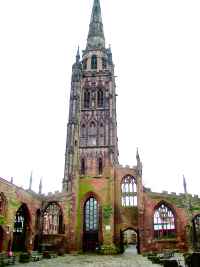
|

|
Selecting either the Old Cathedral or the New Cathedral above will take you to pages with more photographs and information on two of Coventry's most prominent buildings.
Coventry streets through the ages.
It is interesting to note the rate of growth of the Coventry streets during the 1800s. For the preceding two hundred years there were very few changes at all, but during the industrial revolution of the 19th century the number of streets in the centre of the city more than doubled. This was mainly due to the building of factories but also around the periphery of the industrial centre was a necessity to house the thousands of people who flooded into Coventry to find employment, first of all in the weaving and watchmaking industries and then from around 1870 the cycle industry which, owing largely to the brilliant inventor James Starley, spawned an astonishing 248 cycle firms in the city, making it by far the biggest bicycle manufacturing centre in the world. Many of these cycle firms would eventually turn to manufacturing cars and surprisingly, James Starley also had a key role to play there too.... he invented the differential gear which retains the same basic design today! |
A photographic walk around Coventry.

|
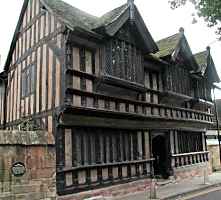
|
If you select the first picture above, you can tour the surviving sections of the original city wall and the two remaining gates. To the best of my knowledge, it is now a complete photographic record of the visible remains from the grand structure that once surrounded and for a while protected our medieval city.
The second picture will take you on a journey showing you some of the historic buildings and places that have survived many wars and have a tale to tell. I have included a little background information with each one but have left the full historic details to the experts. Hopefully this section will whet the appetite to dig further.....
You can find a wealth of information and further reading about Coventry on the internet. Some such sites are listed in my Links page.
The TV "Time Team" dig.
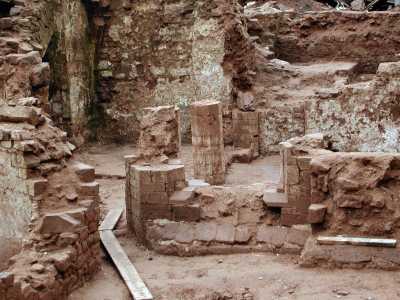
In 1999 and 2001 the Channel 4 TV - Time Team, fronted by Tony Robinson (better known by many as "Baldrick" in the comedy, Blackadder) came to Coventry to do an historic archaeological dig in search of the original cathedral of St. Mary's.
They were astonished by the quality of what they found and consequently made an unprecedented second visit to the city to see the progress made by Coventry archealogical experts who continued their work.
The cathedral was an enormous structure and the dig revealed many complete artifacts from as long ago as the 12th century which had remained buried for over 400 years since King Henry VIII's Dissolution of the Monasteries.
All the original information on these two visits is available on the Channel 4 web-site including 360 degree panoramas and computer generated reconstructions. You can access their pages directly by clicking on the relevant dates above.

|

|
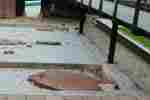
|

|

|
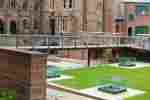
|
If you would like to see a few of my own photographs from around the dig, please select one of the images above for a larger version.












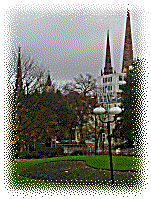 The City of Coventry has been the hometown of our family since 1902 and is rich in history, particularly the Medieval centre of the old town, parts of which have remained unchanged for several centuries. The city's known history stretches back around a thousand years with one of the earliest recorded references to the place being of the Danes, led by Edric the Traitor, sacking the nunnery of St. Osberg's in 1016. The nunnery had been founded 300 years earlier and would probably have stood somewhere near the very centre of the town.
The City of Coventry has been the hometown of our family since 1902 and is rich in history, particularly the Medieval centre of the old town, parts of which have remained unchanged for several centuries. The city's known history stretches back around a thousand years with one of the earliest recorded references to the place being of the Danes, led by Edric the Traitor, sacking the nunnery of St. Osberg's in 1016. The nunnery had been founded 300 years earlier and would probably have stood somewhere near the very centre of the town.
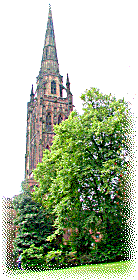 Coventry as a County.
Coventry as a County.
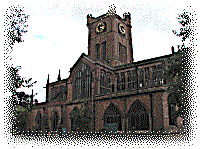 .....Around 1648, during the civil war, Oliver Cromwell sent many Scottish Royalist prisoners (who had been fighting for Charles I) to be imprisoned in St. Johns. Whilst exercising in the streets, the soldiers were completely ostracised by the strongly parliamentarian Coventry folk. Since then, people who have been shunned in that way are said to have been "sent to Coventry".
.....Around 1648, during the civil war, Oliver Cromwell sent many Scottish Royalist prisoners (who had been fighting for Charles I) to be imprisoned in St. Johns. Whilst exercising in the streets, the soldiers were completely ostracised by the strongly parliamentarian Coventry folk. Since then, people who have been shunned in that way are said to have been "sent to Coventry".


